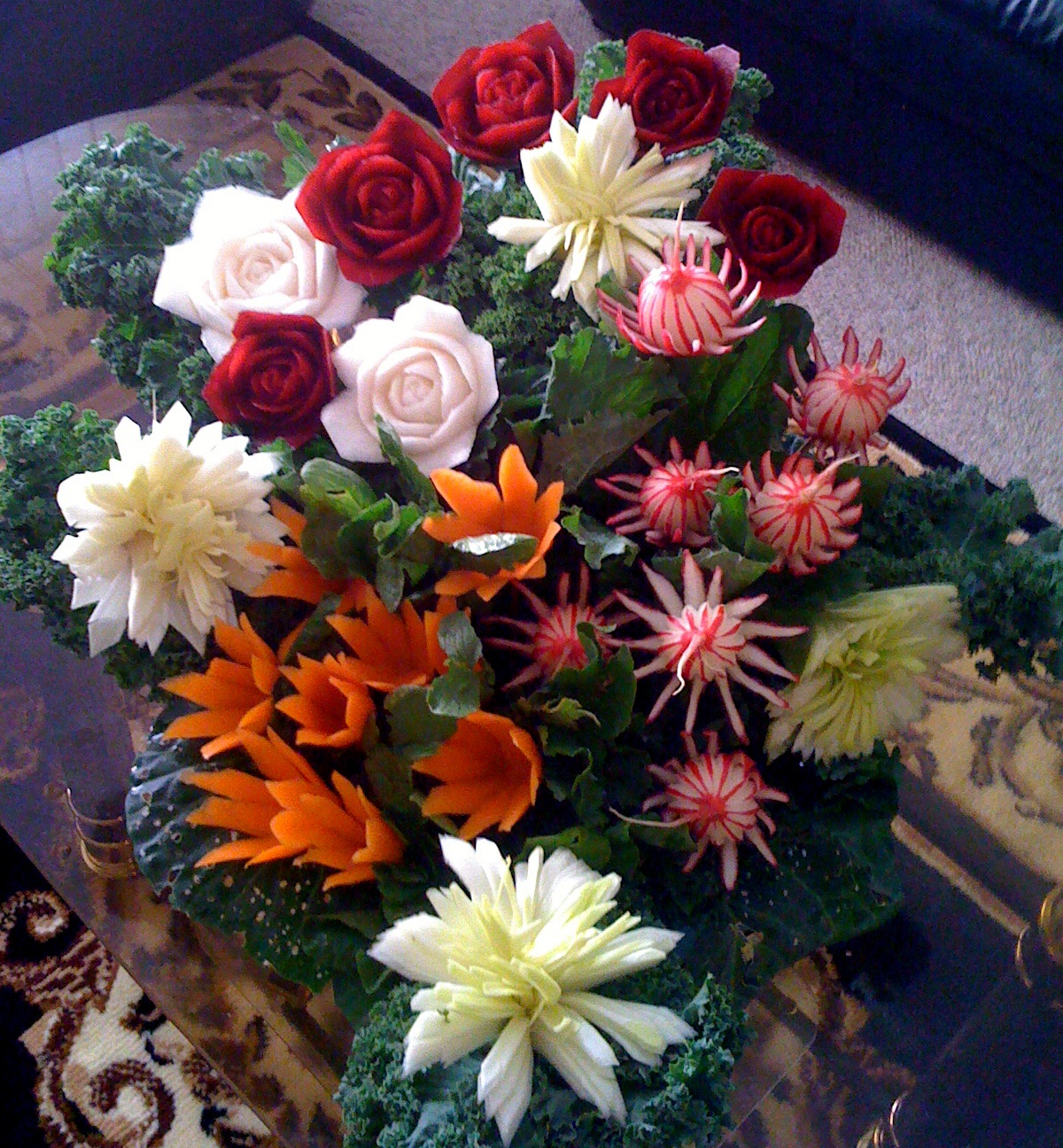While it’s not that common in Canada, carving flowers and creating displays and centrepieces from vegetables is a popular as well as beautiful art form in many Asian countries.
Lyn Attanayake, 39, who is originally from Columbo, the capital of Sri Lanka, who now calls Red Deer home, does vegetable carvings as a hobby and business on the side.
Now a kitchen manager at Denny’s, Attanayake was trained in the hospitality industry and as a chef in his native country where he worked in the kitchens of five-star hotels before immigrating to Canada five and a half years ago. Four years later his wife and two young sons joined him in Red Deer. He did no formal training in the art of vegetable carving, but learned from a colleague who mentored him. In Sri Lankan upscale hotels, vegetable carving is a specialist’s job.
“I just started by watching and then doing it myself and some of it wasn’t very pretty at first,” said Attanayake.
But his colleague showed him how to do the little things that can make a difference, “And I just kept trying and trying to get better, one by one. Sometimes I’d just take some vegetables and try to do different things with them.”
The practice and experimentation paid off and now he can carve whole watermelons into decorative, elaborate patterns, and he uses carrots, beets, radishes, leeks, turnips or almost any vegetable to carve realistic flowers and plants for dazzling displays of colour.
He’s also done some pumpkin carving too, but says he doesn’t have the right tools for pumpkins. He’s also tried carving butter, but modestly says that’s not where his talents reside.
Mostly he does centrepieces or displays to order, and for practice supplies them for special occasions like local birthdays and weddings to friends and fellow co-workers. The average display takes him two and a half to three hours to complete and he charges by the time, size and cost of the ingredients.
While he enjoys the carving, he sees it as a sideline to his first career as a chef. When it comes to cooking, Attanayake said, “I can cook everything; Arabic, Chinese, international, whatever, because (in the hotel industry) you’re feeding people from all over the world.” But he can carve flowers from all over the world too.
Some sources said vegetable carving originated in Thailand about 700 years ago. One Thai emperor even wrote poems about it and it is often taught in primary school there, as well as at university. Other food historians say it dates back to the Tang Dynasty, about 600 A.D., in China. It’s especially popular in Japan, where vegetable carving is basic to every chef’s training. It’s an art form that is only limited by the skills and imagination of the carver.
acryderman@reddeerexpress.com



